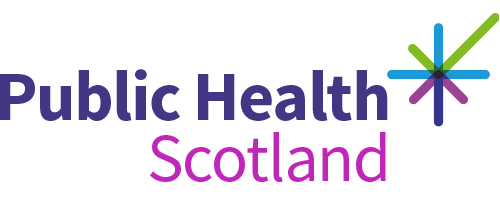Driving health equity by turning data into action
Posted on 26 August 2025 by Ruth Glassborow
- Population health

In our latest blog, Ruth Glassborow, Director of Population Health and Wellbeing at Public Health Scotland (PHS) discusses the latest Collaboration for Health Equity in Scotland webinar, where the effective gathering and use of local data was the key focus.
How can data help us build a fairer, healthier Scotland?
That was the central question explored in the second webinar of the Collaboration for Health Equity in Scotland series, held in June, where public health professionals, data experts, and local partners came together to share insights, challenges, and opportunities.
The session focused on how we can harness data so we can truly learn about our communities and their needs, and more significantly, how we can use this data to influence positive change.
The power of evidence: What the data tells us
Dr Jessica Allen and Professor Peter Goldblatt from the Institute of Health Equity (IHE) kicked off the session with a compelling look at the latest findings from their upcoming report on the Social Determinants of Health.
The numbers were stark: life expectancy and healthy life expectancy can vary by more than 25 years between Scotland’s most and least deprived areas.
Using the Marmot principles – eight foundational objectives for reducing health inequities - as a framework, the report highlights deep-rooted inequalities both within and between local areas. These insights are not just sobering, they’re a call to action.
Professor Goldblatt’s analysis of resource allocation across Scotland revealed a critical gap; funding is often based on service delivery costs rather than actual need. This means that communities with the greatest needs may not be receiving funding proportionate to the size of the challenge.
Aligning resources with need is essential if we’re serious about reducing health inequalities.
Introducing the Population Health Dashboard
After colleagues from IHE set the scene, Craig Waugh, Statistician at the Directorate for Population Health within the Scottish Government, unveiled a powerful new tool: the Population Health Dashboard, co-developed by PHS’s ScotPHO team.
Built around the Marmot principles, the dashboard features 250 indicators that offer a strategic, data-driven view of Scotland’s health landscape. These comprehensive indicators give a snapshot of a range of trends that include information on behaviours, crime, life expectancy, and much, much more. It allows users to look at the national picture as well as drill down into specific locations.
The dashboard is designed to support the Population Health Framework (PHF) and the Collaboration for Health Equity in Scotland by helping stakeholders monitor progress, identify gaps, and take informed action.
The PHF sets a bold vision - longer, healthier, and more fulfilling lives for all. It has a specific target to improve Scottish life expectancy, whilst reducing the life expectancy gap between the most deprived 20% of local areas and the national average by 2035. Two initial priorities have been identified: embedding prevention in our systems and improving healthy weight.
Local action, real impact
So now we know what the issues are, and have good insights into how they’re evolving – but how do we use this information to make significant change?
In the final section of the webinar, Kirstin McNicol from our Local Intelligence Support team at PHS shared how data is already driving change on the ground.
In the Shaping Places for Wellbeing Programme, PHS and the Improvement Service worked with communities like Rutherglen in South Lanarkshire to build detailed local profiles. This combined hard data with community insights to identify key areas of inequality.
These profiles are helping local authorities and NHS boards design place-based strategies that reflect the lived realities of residents. Kirstin emphasised that the Dashboard should be used as a prioritisation tool, supported by community insights, to bring statistics to life for decision-makers and communities alike.
Reflections: Data as a catalyst for change
The overarching takeaway for the session was that data isn’t just for identifying and describing health inequalities - it’s a tool for addressing them.
The insights shared by experts and practitioners alike made it clear that if we want to build a fairer, healthier Scotland, we must move beyond simply collecting and reporting data. We must use it to drive decisions, shape policy, and empower communities and this is exactly what the Collaboration for Health Equity aims to do.
By using evidence to guide decisions, Scotland can build a health system that is equitable, responsive, and resilient; one which enables our citizens to have the opportunity to live long, healthy, and fulfilling lives.
All our Collaboration for Health Equity learning system webinars are available online to view afterwards, including this latest session, so please visit the PHS website to access these valuable resources.
The next webinar will be held on Tuesday 9 September 2025 at 10:30-12:00 and will explore how each of the three participating areas – Aberdeen City, North Ayrshire and South Lanarkshire - have decided where to focus their efforts and how they have used evidence and data to inform that process.
If you’d like to stay informed about future events and updates, you can sign up to our mailing list by emailing phs.ches@phs.scot
Sign up for the next Collaboration for Health Equity webinar for free
Read more about the Collaboration for Health Equity Scotland and view past webinars on our web pages.
Find out more about the eight Marmot principles
